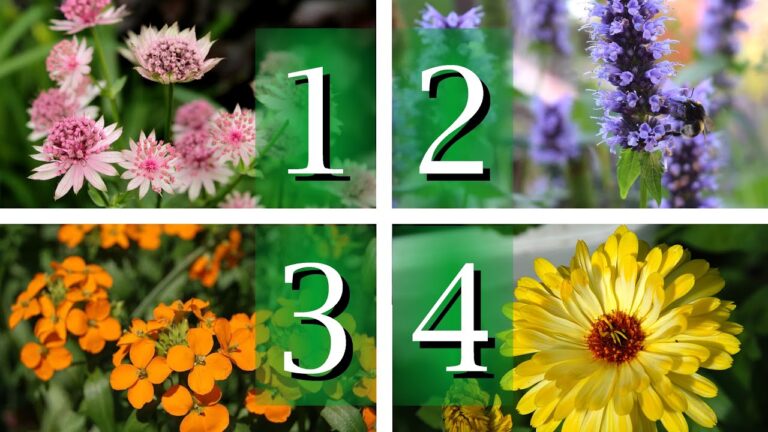When it comes to selecting the right rose for your garden, the choices can feel overwhelming. Jason, from Fraser Valley Rose Farm, delves into this topic with clarity and expertise, helping both novice and experienced gardeners navigate the maze of rose classifications. Roses are often categorized into groups with terms like “grandiflora,” “floribunda,” and “hybrid musk,” which can be confusing to the uninitiated. Adding to the complexity, some companies have branded their roses under unique series names. This article breaks down these classifications and provides a helpful guide to choosing roses based on their garden use.
Roses for Containers and Small Spaces
Small roses, often referred to as miniatures or small floribundas, are a fantastic choice for containers, patios, or the front of garden borders. These roses are prized for their vibrant colors, cluster-flowering habits, and repeat blooms throughout the season. While their fragrance can vary, their versatility and visual appeal make them a popular choice for gardeners seeking compact beauty.
Brands like the Drift Series (by Meilland), Veranda Series (by Kordes), and the widely available Flower Carpet Series dominate this category. Jason highlighted two examples: Rainbow’s End, a low-growing, mounded miniature, and Warm Welcome, which features small flowers but grows up to eight feet tall, making it ideal for larger containers or vertical supports.
Medium-Sized Garden Roses
Medium roses, typically three to five feet tall, are among the most versatile in the garden. This category includes many well-known rose types, such as floribundas, hybrid teas, and grandifloras.
- Floribundas: These cluster-flowering roses, such as Julia Child or Fellowship, offer vibrant, continuous blooms perfect for landscapes.
- Hybrid Teas: Often characterized by their elegant, single blooms, hybrid teas like those used by florists provide a classic rose aesthetic.
- Grandifloras: Combining the best traits of floribundas and hybrid teas, grandifloras produce larger blooms in clusters.
Hybrid Musks: The Overlooked Gems
A notable group within the medium-to-large rose category is the hybrid musk roses, which date back to the early 20th century. These roses are admired for their exceptional garden performance, disease resistance, and fragrant blooms. Hybrid musks often bloom in clusters and thrive in both sun and part-shade, making them versatile choices for many garden settings.
Examples include Robin Hood, with its cheerful red-pink blooms, and Sally Holmes, a vigorous variety known for its creamy white flowers and sprawling growth habit. Hybrid musks are particularly useful in cottage gardens, informal landscapes, or as border fillers where their natural, slightly wild growth style shines.
Large Garden Roses
Large roses, spanning over five feet tall, bring drama and grandeur to the garden. This group includes towering hybrid teas, grandifloras like the impressive Queen Elizabeth, and many varieties of David Austin’s English Roses.
David Austin roses are a standout in this category. While some may fit into the medium-sized group, many varieties—especially in warmer climates—grow vigorously, often resembling climbers or large shrubs. Jason emphasized their dual role as both aesthetic focal points and robust garden performers.
Larger hybrid musks, such as Sally Holmes, and some shrub roses also fall into this group, offering a mix of classic charm and wild beauty.
Climbers and Ramblers
For vertical interest, climbers and ramblers offer unmatched versatility. These roses span all other categories, from miniature climbers like Warm Welcome to climbing hybrid teas such as Climbing Peace. They can range from modest eight-foot growers to massive, sprawling roses.
Climbers are often climbing mutations of repeat-flowering roses, offering blooms throughout the growing season. Ramblers, on the other hand, have wilder growth habits and usually bloom once per year, making them ideal for naturalizing in untamed spaces.
Jason recommended referencing resources like Help Me Find, a rose-specific database, to understand the mature size and habit of climbers and ramblers.
Climatic Adaptability: Roses for Every Garden
Choosing the right rose also depends on your local climate, as not all roses thrive under the same conditions. For instance:
- Noisettes, such as Crépuscule, are well-suited to warmer climates where they flourish with minimal winter protection.
- Hybrid teas may struggle in regions with harsh winters unless provided with adequate mulching and protection.
- David Austin roses, while vigorous in mild climates, can sometimes underperform in areas with extreme heat or humidity unless bred for those conditions (e.g., the Sunbelt Series by Kordes, which excels in hot climates).
For gardeners in cooler zones, varieties like Rugosa roses offer outstanding hardiness and disease resistance. Meanwhile, compact floribundas, such as those in the Drift Series, are excellent choices for smaller urban gardens with variable conditions.
Understanding your region’s growing conditions ensures your roses will not only survive but thrive, delivering blooms season after season.
Key Takeaways
- Small Roses: Ideal for containers and patios, offering color and compact growth.
- Medium Roses: Perfect for versatile landscaping, including floribundas, hybrid teas, and hybrid musks.
- Large Roses: Best for dramatic garden impact, featuring David Austin roses and robust shrubs.
- Climbers and Ramblers: Provide vertical beauty and wild, sprawling growth for unique spaces.
- Climate-Specific Choices: Select varieties like noisettes for warm climates or rugosas for cold, ensuring success based on your region.
Jason’s insights simplify the process of choosing the right rose for any garden setting. Whether you’re designing a compact patio display or a sprawling landscape, understanding these categories ensures you’ll select roses that thrive and bring joy for seasons to come. For more detailed discussions on rose breeding and classification, Jason invites readers to explore additional resources on his website and YouTube channel.




